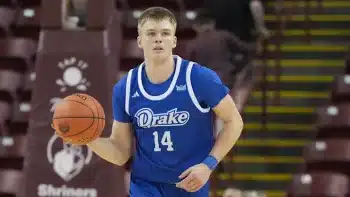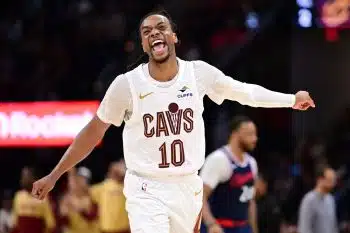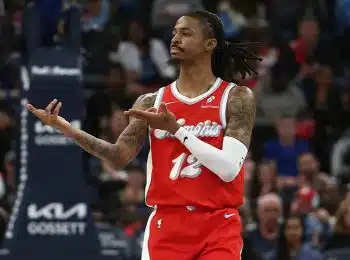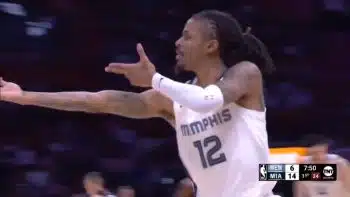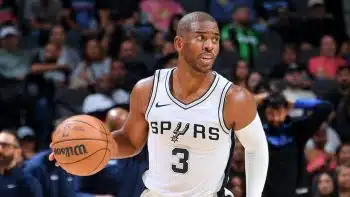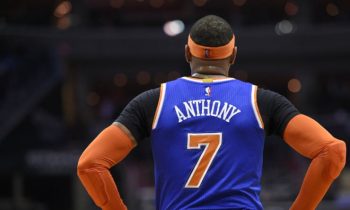NBA
Subpar NBA Summer League Performers
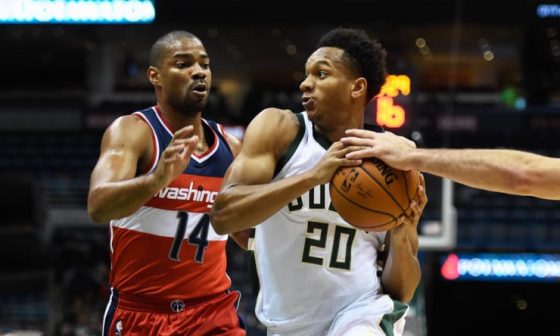
Within the yearly NBA lexicon, “Summer League means nothing” is just a hair less popular than, “What happens in Vegas stays in Vegas.”
It’s an age-old adage, rooted in observable fact. The list of guys who lit it up in Vegas for a summer or two before never being heard from again in NBA circles is nearly endless, and it’s almost as easy to find a number of doe-eyed 19-year-olds straight out of college who couldn’t do much in their first summer of action but still managed to become quality rotation players or better.
The mantra rings truer on the positive side of things than the negative side, however, and it’s through this lens that we can begin to parse a few details. It’s not surprising when D’Angelo Russell or Devin Booker put up big numbers with ease as second-year lottery picks with a full NBA season under their belts; when others in a similar situation badly struggle, however, it’s a warning light. Combine this with visual indicators and a few other telltale signs, and in reality it’s much easier to assess which guys are hurting their full-time NBA chances at Summer League than which are helping them.
Let’s take a look at a few examples of guys who haven’t lived up to expectations on this stage.
James Young, Boston Celtics
Now in his second Summer League appearance and set to enter his third NBA season, the 17th overall pick from 2014 has consistently failed to make an impact even at the Summer League level. He shot just 13-for-48 from the field in all summer competition in 2015, and his 14-for-39 showing this summer between Sin City and Utah brings his grand total over two summers of play to a gross 31 percent. Somehow, he’s actually shooting a better percentage on 138 field goals in the regular NBA than he is during a much easier competition.
It’s far from just a small-sample size thing, too. Young is frequently just invisible on the court, going long stretches where it’s far too easy to forget he’s even out there. He has the body to be at least a solid defender, with 6’6 height and a 7’0 wingspan, but has never shown the effort or mental capacity at any professional level. His off-ball defense ranges from “slow to react” to “flat-out disinterested.”
He hasn’t developed his body much (if at all) since entering the league over two full years ago, and hasn’t added any ball skills whatsoever to the shooter reputation that put him in the first round to begin with. Young has totaled just 10 assists in the same number of summer games over the last two years.
For a near-21-year-old picked on the fringes of the lottery and now playing mostly against journeymen and even younger players, these are damning realities. Young has managed to hit 40 percent of his three-point attempts this summer, a small boon, but the figure comes on just 17 total tries and puts his utter inability to score from inside the arc in the spotlight; Young has converted just five of his 22 two-point attempts, or under 23 percent. Given Boston’s stocked youth cupboard and his lack of success, he’s in danger of falling out of the league in the near future.
Rashad Vaughn, Milwaukee Bucks
There must be a curse on 17th overall picks or something, because 2015’s selection in the slot has struggled mightily to this point as well. Rashad Vaughn has sandwiched an NBA rookie campaign where he finished with a 4.2 PER (yes, 4.2, easily the worst in the league among players logging at least 1,000 minutes) in between Summer League showings of 36 percent and 34 percent from the field in 2015 and 2016, respectively.
Unlike fellow prime number draft pick Young, Vaughn has been asked to do heavy lifting for the Bucks as their primary offensive creator in summer play. He’s taken over 16 shots per game between last summer and this one, clearly stretching the limits of his ability. Like Young, he’s been completely ineffective as a passer, with assist totals that come nowhere near where they should be given how often Vaughn has the ball. All of his numbers this summer look eerily similar to those from a year ago, a decidedly negative sign. He’s connected on just seven of his 30 three-point attempts this year.
Vaughn has a few more things going for him than Young, namely age – Rashad is a full year younger and won’t turn 20 until mid-August. He’s been an acceptable-to-solid rebounder at his position both last year and this one. Vaughn also has been asked to play a summer role that’s likely nowhere close to what his eventual NBA responsibilities would entail (assuming he makes it that far), where Young has largely been doing the same things asked of him in the full-time NBA and is still failing. There’s time yet for Vaughn to make an impact, but his second summer campaign isn’t a very good start.
Tibor Pleiss, Utah Jazz
Pleiss is a different sort of case, both because he doesn’t fit the “former lottery pick who’s multiple seasons in” label and because, on the surface, his production doesn’t seem all that bad. He’s hovered right around the 50 percent mark from the field overall in eight appearances this summer, shooting very well from beyond the arc and the free-throw line (both on tiny samples, but still).
Unlike many of his peers at this event, though, Pleiss is nearly 27 years old and is pretty much finished developing at this point, which puts production that’d be acceptable for certain guys into a different category for him. After a year spent mostly in the D-League, it’s a bit worrisome that Tibor hasn’t been able to make more of an impact among guys typically far less physically developed than himself.
The issues begin on the defensive end, where Pleiss’s gargantuan height and wingspan just haven’t translated into the sort of anchor one hopes for. Even in the D-League and against summer competition, he’s frequently bullied by stronger guys down low and has very little impact defending the rim, even against perimeter players. He lacks the strength (both in his hands, for grip, and in his arms overall) to win his share of contested boards, with most of those he does collect coming purely by virtue of his height advantage. Pleiss simply isn’t mobile enough to defend any high-level pick-and-roll attack or pick-and-pop bigs. The Jazz have been better defensively this summer while he sits, even with likely their weakest roster in years behind him.
Tibor’s offensive template is incredibly desirable in the modern game, but in application it’s less impactful. His strong performance from beyond the arc this summer comes after just a 32 percent showing from there in the D-League, and to this eye it could be a bit of a desert mirage. His shot takes days to load up, and the list of successful NBA marksmen who shoot a ball as flat as Pleiss is pretty short (on many of his attempts the thing literally doesn’t spin, knuckleballing its way to the hoop).
His timing and win rate on the offensive glass leaves something to be desired against NBA athletes, and he turned the ball over more often than he assisted teammates both in the D-League last year and in summer play this year. Huge inconsistencies from game to game over these seven contests showcase a talented guy still struggling to make a solid nightly impact.
Pleiss is an incredibly hard worker with a great attitude toward improvement, but in the context of his play that might actually be a bit of an issue – he really hasn’t gotten much better despite strong intangibles. If his shooting figures from this summer were the real deal long-term, it’d be a different story, but this just doesn’t feel like the case. He’ll be in a fight once again to stay on Utah’s full-time roster, and even if he wins it (he’s probably a favorite to do so at this point), it could be another year bouncing back and forth between the D-League and NBA with at least five names ahead of him on the Jazz’s big depth chart.
The Sacramento Kings
Yeah, a full team gets a failing grade here. After a pretty good summer personnel-wise (for them, at least), the Kings have badly bungled their Summer League team to the point where even the small nuggets to be gained from these games are rendered virtually meaningless.
It would be curious enough if the Kings simply had five centers on their Vegas roster, but it’s outright offensive to the basketball mind to see them playing two and even three of these guys at the same time. There hasn’t been enough room to find minutes for each of 2015 lottery pick Willie Cauley-Stein, 2016 lottery pick Georgios Papagiannis and 2016 late first-rounder Skal Labissiere – so the Kings have just said screw it, we’ll play them all anyway.
Willie Cauley-Stein is not a small forward, guys, and his numbers in particular represent just how strange this looks. Willie has barely cracked 25 percent from the field in four games, forced to stretch his game miles beyond what he should actually be doing in an effort to get each of he, Papagiannis and Labissiere at least 20 minutes a night. Big George has struggled from the field as well, but in either case, how can we have any clue if this is player- or scheme-related?
The Kings have lost each of their four games so far in Vegas, three by double figures, and while this alone isn’t so bad, the way they’ve gone about doing it is just such a silly way for a team to approach summer play. There’s a big difference between extending roles, like most teams do for certain guys at this time of year, and what the Kings are doing. This approach could yield bad habits so easily, and even if it doesn’t, it offers no real benefit. Cauley-Stein, for instance, did perfectly fine in the NBA last year and would almost certainly have been better off staying home and doing team workouts. Not that it’s anything new, but management in Sacramento needs to take a hard look at how they’re operating.
